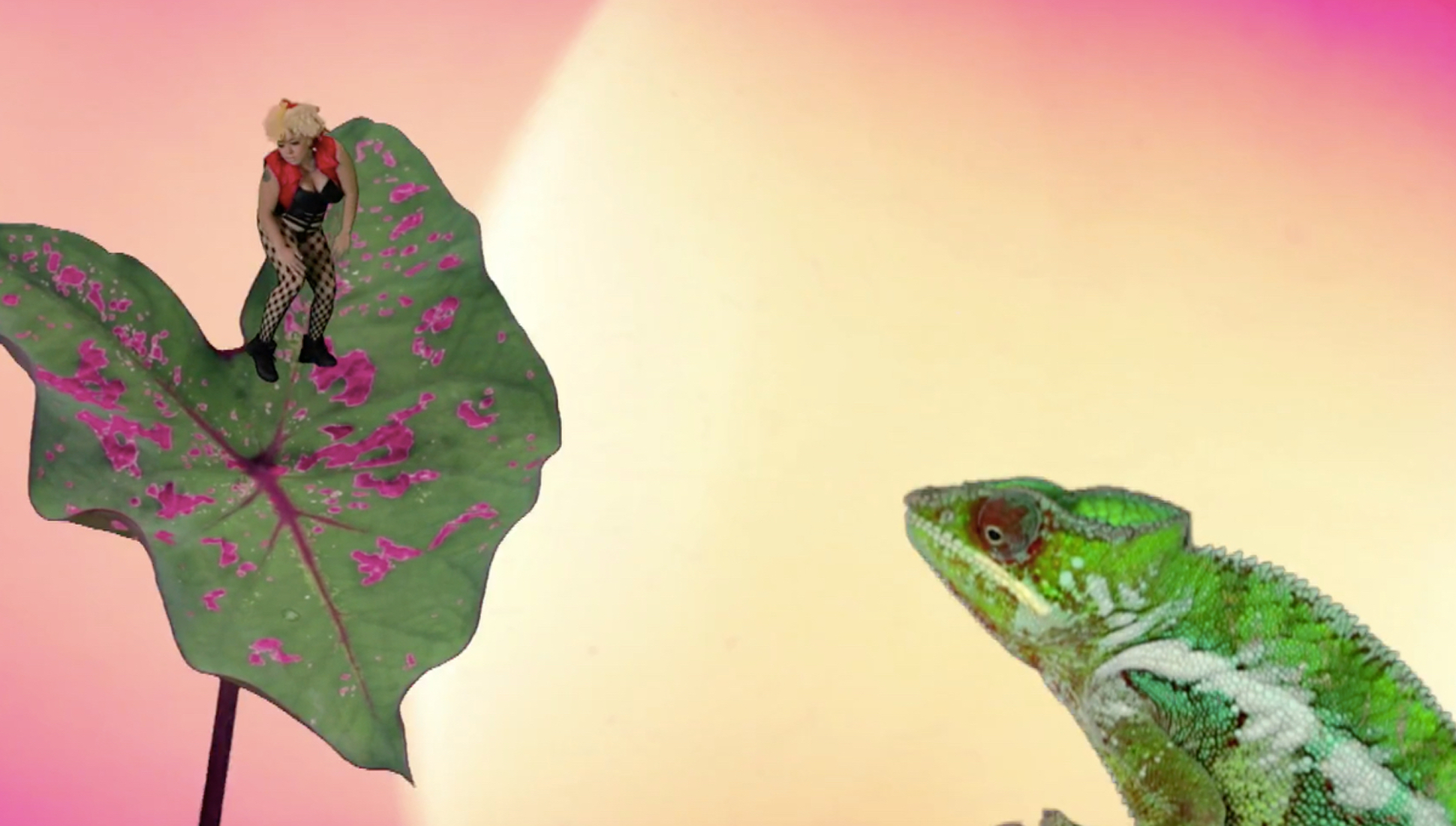This year we took the time to dive deep into the work of some of the world’s most exciting artists.
Each month we dedicate a week to an artist whose work we feel necessitates a more prolonged investigation, engaging with an eclectic mix of artists by presenting a selection of work that best represents where they have come from and where they might be going with their artistic practice.
We’ve looked at work past and present from some of the world’s leading directors, choreographers, designers and performers, exploring some of the most primal expressions of creativity alongside bleeding-edge technology and techniques that give us a glimpse of the ways in which we might interact and engage with art in the future.
This is a selection of some of our favourite Fact Residents. To check out all the residencies we’ve hosted in 2020, head over to our Residency archives.
Andrew Thomas Huang
It’s impossible to think of the recent work of Björk or FKA twigs without thinking of the mystical imagery and surrealist world-building of Andrew Thomas Huang.
During his residency for Fact, we not only looked at the making of the videos for ‘The Gate’ and ‘Cellophane’, but we also showcased his dazzling forays into narrative cinema, premiering a behind the scenes look at his 2019 short Kiss of the Rabbit God and presenting the world premiere of his short film, Lily Chan and the Doom Girls.
“While searching for an underlying theme in my work, I keep running into the idea of hybridity”, says Huang, “whether it’s cultural or sexual hybridity of my characters, or visual hybridity between live action and visual effects, I am interested in the creation of characters that straddle multiple worlds.” This creative cross-pollination between different disciplines, environments and voices is fundamental to his filmmaking practice and testament to the breadth of his technical skill and artistic vision.
Cecilia Bengolea
For Cecilia Bengolea, dancing is both a tool for self-expression and a medium for radical empathy and emotional exchange. “Mainly, my work is about the body inventing out its own sources”, she explains, “its own rituals.” Whether presented in live performance or captured on film, her movements constitute a form of animated sculpture, a practice that allows her to become both subject and object at once.
Her approach to dancehall, the genre and culture she has returned to time and again throughout her career, perfectly encapsulates her fundamental belief that the power of performance can infuse both the individual and the collective body with energies drawn both from nature and from the empathetic relationships forged with others in the dance.
Whether documenting the incredible diversity of different dancehall styles and dancers in Dancehall Weather and Oneness, joining the dots between more classical styles of dance and contemporary musical influences in Dub Love, or exploring psychedelic illustrations of sexuality and self-expression alongside Jeremy Deller in Bom Bom’s Dream, Bengolea approaches the genre holistically, underlining it as a global artistic practice in which sound and movement are equally vital.
Ezra Miller
While corporate stock imagery, the proto-generative, abstract expressionism of Gerhard Richter and the ‘Nervous Refix’ of the 2001 UKG classic ‘Sounds Of Da Future’ might seem at first to be a disparate set of influences, in the work of Ezra Miller commercial absurdity, fine art sensibilities and serotonin inducing mixes exist in the same, hyperactive landscape.
His digital art and design practice is the result of an intense and lifelong engagement with the feed, an instinctual response to the limitless potential to watch and listen to everything, all at once, all of the time.
Rather than filter through constant streams of information, Miller instead creates adaptive visual systems into which he can feed his diverse influences for an infinite number of procedurally-generated outcomes. In these ambitious works garage and Gerhard become different shades of the same digital pigment.
LABOUR
For Farahnaz Hatam and Colin Hacklander, creative expression and philosophical investigation are inseparable from one another. At the heart of their performance practice as LABOUR lies the ambition: “to create a space within the music that we can create the possibility to reach into another place and perhaps ask the question: what is the nature of being?”.
In their works ‘next time, die consciously (بیگانگی)’ and ‘nine-sum sorcery’, Hatam and Hacklander probe at the nature of the self, exploring the forces under which the self is constructed before interrogating this process of construction, challenging the concept of autonomy by presenting existence as the product of physical, emotional and spiritual forces of which we have little control over.
In ‘next time, die consciously (بیگانگی)’ the constructible nature of the self is highlighted through processes of ecstatic transformation and synthetic assemblage. In ‘nine-sum sorcery’ this idea is taken further, as the esoteric art collective Mi†ra invoke the dark power of an inanimate substance given sentience. In both, the nature of being is interrogated through the investigative methodology of their work, in which their performance practice is aligned with what philosopher Christopher J. Arthurs defines as “the ontologically fundamental productive activity in and through which one becomes what one is.”
Sam Rolfes
Back in July we embarked on a head-spinning VR odyssey through the world of Sam Rolfes. For his residency, Rolfes decided against sending examples of his work, instead allowing us to play through it, providing us with a game populated by characters and environments designed by Sam and Andy, his brother and Team Rolfes partner, for House Of Kenzo, Rabit, Lady Gaga, Matthew Dear and Marshstepper.
The experience was illuminating, hilarious and occasionally quite disturbing. We’re pretty sure the nightmarish Rolfes avatar provided us with some incredible insights into how Rolfes has developed his singular performance practice over the last few years, but it’s entirely possible it was just fucking with us. We might have bitten off more than we could chew with this one.
Watch next: Fact 2020: Audiovisual




